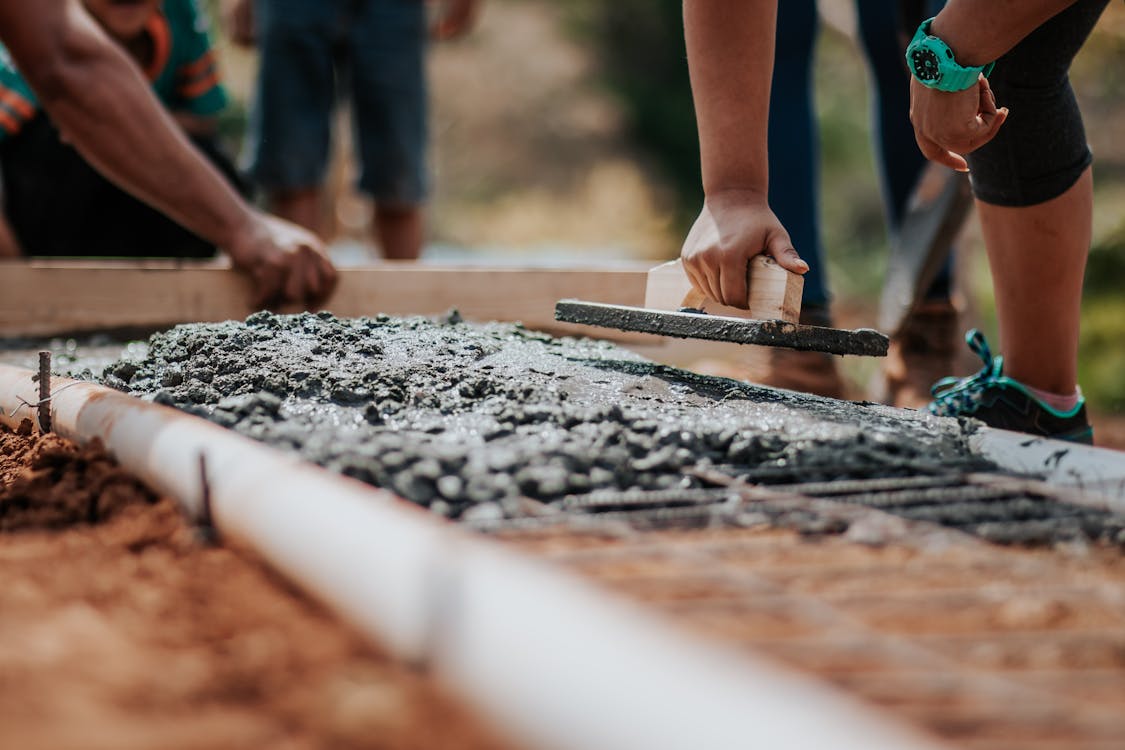Concrete is one of the most widely used materials in construction due to its durability, versatility, and strength.
Whether you’re building a foundation, driveway, or a high-rise structure, concrete plays a crucial role in securing the stability and longevity of your project.
Working with concrete isn’t as simple as mixing, pouring, and waiting for it to set. Small mistakes during the process can lead to significant issues down the road, from structural weaknesses to expensive repairs.
Understanding where people commonly go wrong and how to avoid these pitfalls can make all the difference in the outcome of your project.
Not Allowing for Proper Curing
Curing refers to maintaining moisture and temperature levels in the concrete after it’s poured, allowing it to reach its full strength. If you don’t allow the concrete to cure properly, it may dry too quickly and crack, resulting in weak spots and a compromised structure. Typically, concrete needs to cure for at least 28 days, but the exact time will depend on environmental conditions and the type of mix used. When it comes to temperature, professionals from Deslauriers believe that maintaining the right conditions during the curing process is important to achieving optimal strength and durability in concrete. Proper curing secures that the concrete will perform as expected over its lifetime.
Using the Wrong Mix
Concrete comes in different types, and each mix is designed for specific applications. Using a mix that’s too weak or not suited for the job can lead to cracks, instability, or even complete failure. For example, a mix designed for sidewalks might not be strong enough for a foundation. It’s crucial to understand the strength requirements of your project and choose the appropriate mix. This could mean adding extra cement to increase strength or using a special mix for outdoor conditions to prevent damage from freezing and thawing. Always consult with a concrete professional or supplier to make sure you have the correct mixture for your specific needs.
Skipping the Reinforcement
Concrete is strong in compression but weak in tension, which means it can crack easily under stress. To prevent this, reinforcement is important. One of the most common mistakes people make is forgetting to reinforce their concrete. Reinforcing steel bars (rebar) or wire mesh are commonly used to strengthen concrete and prevent cracks. Without proper reinforcement, your structure may face serious durability issues over time. For example, in foundations or load-bearing walls, skipping reinforcement can lead to the concrete cracking under pressure, causing potentially dangerous situations. Always use adequate reinforcement to increase the strength and longevity of your concrete structure.
Poor Mixing and Placement
If the concrete is too dry, it will be hard to work with, and if it’s too wet, it won’t cure properly. This can lead to a weaker structure that is prone to cracking or shifting. Another common mistake is improper placement. Concrete should be poured in layers and compacted well to avoid air pockets, which can create weaknesses in the structure. If you’re working with a large pour, make sure to use the right equipment, like a concrete pump, to make sure it’s placed evenly and properly. Avoid placing concrete in extremely hot or cold weather conditions as this can affect the curing process, leading to a substandard result.
Ignoring the Importance of Formwork
Many builders make the mistake of not paying enough attention to formwork, thinking that it’s a small detail in the grand scheme of the project. Formwork plays a significant role in the final shape, stability, and finish of the concrete. If the formwork is improperly aligned or not secured, the concrete can shift, leading to uneven surfaces or gaps. It can also affect the overall strength of the structure. To avoid these issues, always use high-quality formwork materials, make sure that the forms are well-secured, and check the alignment carefully before pouring the concrete.
Failing to Account for Shrinkage
Concrete naturally shrinks as it cures, which can lead to cracking if not properly accounted for. Shrinkage happens as water evaporates from the mix, causing the concrete to contract. To prevent shrinkage cracks, it’s important to plan for control joints and expansion joints in your concrete structure. Control joints are placed in strategic locations to allow for movement and help direct where cracks will occur. Expansion joints, on the other hand, help prevent damage when the concrete expands or contracts due to temperature changes. Neglecting these joints can result in unsightly and costly cracks that undermine the integrity of your project.

Working with concrete is a skill that requires attention to detail and careful planning. Avoiding these common mistakes – choosing the wrong mix, skipping reinforcement, poor mixing and placement, improper curing, neglecting formwork, and ignoring shrinkage – can save you from costly repairs and structural failures down the line. By taking the time to properly prepare and execute each step, you secure the durability and longevity of your concrete structure. Concrete may seem like a simple material, but its proper handling is key to the success of your building project.








